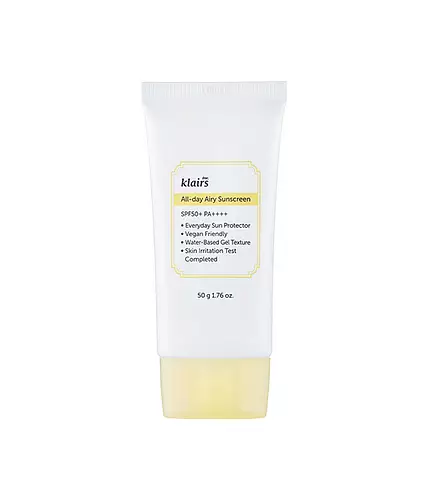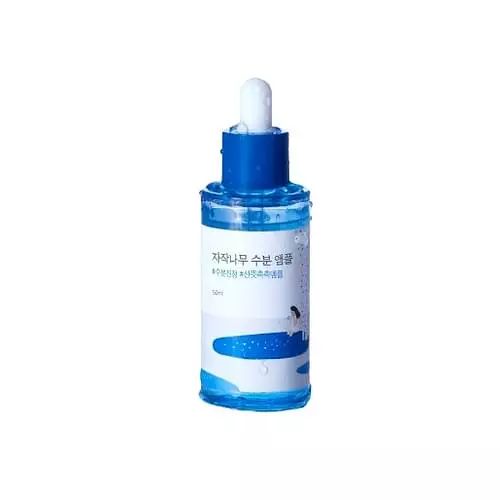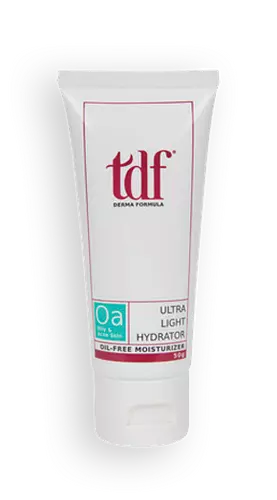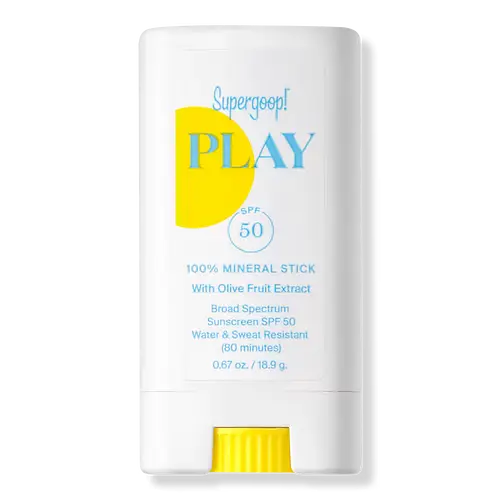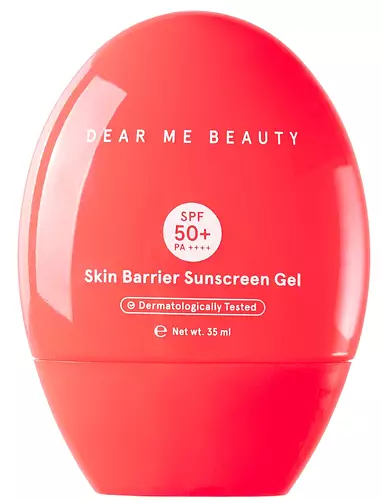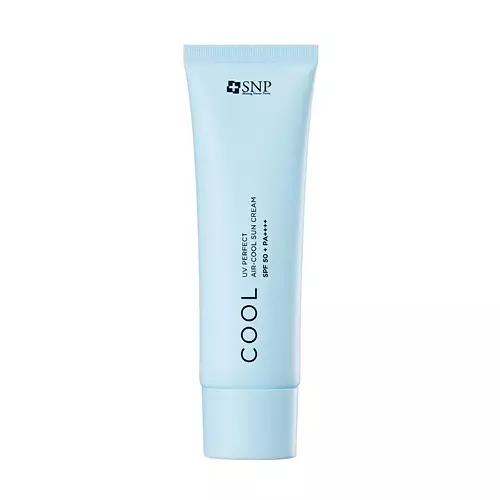Updated on February 08, 2024
Overview
What they are
These products are both sunscreens. They have a total of 8 ingredients in common
Cool Features
They both contain niacinamide and SPF
Suited For
They're both likely to be good for fighting acne, anti aging, dry skin, brightening skin, sensitive skin, oily skin, reducing pores, scar healing and dark spots
Free From
They both do not contain any common allergens, parabens or sulfates
What's Inside
They both contain fragrances and oils
We independently verify ingredients, and our claims are backed by peer-reviewed research. Spot a product that needs an update? Let us know.
Ingredient Info
Some By Mi Truecica Mineral 100 Calming Suncream SPF 50+ PA++++ 29 ingredients
Round Lab Birch Moisturizing Sunscreen SPF 50+ PA++++ 40 ingredients
At a glance
Click on any of the items below to learn more
Some By Mi Truecica Mineral 100 Calming Suncream SPF 50+ PA++++ 29 ingredients
Round Lab Birch Moisturizing Sunscreen SPF 50+ PA++++ 40 ingredients
Notable Ingredients
This product contains 1 ingredient that may have this attribute:
This product contains 1 ingredient that may have this attribute:
This product contains 1 ingredient that may have this attribute:
Benefits
This product contains 1 ingredient that may have this attribute:
This product contains 2 ingredients that may have this attribute:
This product contains 3 ingredients that may have this attribute:
This product contains 2 ingredients that may have this attribute:
This product contains 1 ingredient that may have this attribute:
This product contains 1 ingredient that may have this attribute:
This product contains 1 ingredient that may have this attribute:
This product contains 1 ingredient that may have this attribute:
This product contains 2 ingredients that may have this attribute:
This product contains 2 ingredients that may have this attribute:
Concerns
This product contains 1 ingredient that may have this attribute:
This product contains 1 ingredient that may have this attribute:
This product contains 1 ingredient that may have this attribute:
Notable Ingredients
This product contains 4 ingredients that may have this attribute:
This product contains 1 ingredient that may have this attribute:
This product contains 1 ingredient that may have this attribute:
This product contains 1 ingredient that may have this attribute:
This product contains 1 ingredient that may have this attribute:
This product contains 2 ingredients that may have this attribute:
Benefits
This product contains 1 ingredient that may have this attribute:
This product contains 1 ingredient that may have this attribute:
This product contains 4 ingredients that may have this attribute:
This product contains 2 ingredients that may have this attribute:
This product contains 2 ingredients that may have this attribute:
This product contains 1 ingredient that may have this attribute:
This product contains 3 ingredients that may have this attribute:
This product contains 3 ingredients that may have this attribute:
This product contains 4 ingredients that may have this attribute:
This product contains 1 ingredient that may have this attribute:
This product contains 5 ingredients that may have this attribute:
Concerns
This product contains 1 ingredient that may have this attribute:
Ingredients Side-by-side
Ingredients Explained
These ingredients are found in both products.
Ingredients higher up in an ingredient list are typically present in a larger amount.
Water. It's the most common cosmetic ingredient of all. You'll usually see it at the top of ingredient lists, meaning that it makes up the largest part of the product.
So why is it so popular? Water most often acts as a solvent - this means that it helps dissolve other ingredients into the formulation.
You'll also recognize water as that liquid we all need to stay alive. If you see this, drink a glass of water. Stay hydrated!
Learn more about WaterButylene Glycol (or BG) is used within cosmetic products for a few different reasons:
- It is a solvent, meaning that it helps to dissolve other ingredients. This also enhances the absorption of the product into one's skin.
- It is a humectant, which means that it helps attract moisture into the skin.
- It helps improve product application.
Overall, Butylene Glycol is a safe and well-rounded ingredient. It is unlikely to irritate skin, and works well with pretty much all other ingredients.
Glycerin is already naturally found in your skin. It helps moisturize and protect your skin.
A study from 2016 found glycerin to be more effective as a humectant than AHAs and hyaluronic acid.
As a humectant, it helps the skin stay hydrated by pulling moisture to your skin. The low molecular weight of glycerin allows it to pull moisture into the deeper layers of your skin.
Hydrated skin improves your skin barrier; Your skin barrier helps protect against irritants and bacteria.
Glycerin has also been found to have antimicrobial and antiviral properties. Due to these properties, glycerin is often used in wound and burn treatments.
In cosmetics, glycerin is usually derived from plants such as soybean or palm. However, it can also be sourced from animals, such as tallow or animal fat.
This ingredient is organic, colorless, odorless, and non-toxic.
Glycerin is the name for this ingredient in American English. British English uses Glycerol/Glycerine.
Learn more about Glycerin1,2-Hexanediol is a multi-tasker ingredient. It acts as a preservative to increase shelf-life and can aid other preservatives in preventing microbe growth. 1,2-Hexanediol also helps the skin retain moisture as a humectant.
In products that are water-based, this ingredient can help stabilize perfumes and fragrances. It can also help make the texture of products softer and more smooth.
Niacinamide has emerged as an all-star ingredient due to its many benefits.
It is known to treat acne by reducing inflammation. It also helps fade dark-spots and strengthen the skin by promoting the growth of the ceramide barrier.
Other benefits include smoothing wrinkles and minimizing redness.
The cherry on top? Niacinamide can also help build keratin, a protein that keeps skin firm.
When incorporating niacinamide into your routine, look out for concentration amounts. Typically, 5% niacinamide provides benefits such as fading dark spots. However, if you have sensitive skin, it is better to begin with a smaller concentration.
Niacinamide can be mixed with other ingredients to boost benefits. For instance, it has shown to be effective when used with copper, folic acid, and zinc to treat acne.
Learn more about NiacinamidePolyglyceryl-3 Methylglucose Distearate is created from the diester of stearic acid and the condensation product of methylglucose and Polyglycerin-3.
As an emulsifier, it is used to bind ingredients together. Many ingredients, such as oils and water, separate naturally. Emulsifiers prevent them from separating to ensure even consistency in texture.
One of the manufacturer for this ingredient states it is vegetable-based. It is also claimed to be stable at both high and low temperatures.
This ingredient may not be safe for fungal acne. We recommend speaking with a professional if you have any concerns.
Learn more about Polyglyceryl-3 Methylglucose DistearateAcrylates/C10-30 Alkyl Acrylate Crosspolymer is a synthetic polymer. It is used to thicken and improve the texture of products.
Acrylates/C10-30 Alkyl Acrylate Crosspolymer is also an emulsifier. Due to its properties, it can prevent water and oil ingredients from separating.
Adenosine is in every living organism. It is one of four components in nucleic acids that helps store our DNA.
Adenosine has many benefits when used. These benefits include hydrating the skin, smoothing skin, and reducing wrinkles. Once applied, adenosine increases collagen production. It also helps with improving firmness and tissue repair.
Studies have found adenosine may also help with wound healing.
In skincare products, Adenosine is usually derived from yeast.
Learn more about AdenosineIngredient Ratings
Here's what our community thinks of the ingredients in these two products.
When to use
Some By Mi Truecica Mineral 100 Calming Suncream SPF 50+ PA++++ 29 ingredients
Round Lab Birch Moisturizing Sunscreen SPF 50+ PA++++ 40 ingredients

Reviews
Here's what our community thinks
Some By Mi Truecica Mineral 100 Calming Suncream SPF 50+ PA++++ 29 ingredients
tatobean
I have Oily-sensitive skin and prone to acne. This product when applied leave a slight white cast. It irritated my skin, causing redness and drying.
Round Lab Birch Moisturizing Sunscreen SPF 50+ PA++++ 40 ingredients
Lapaki
This reef-safe chemical sunscreen stands out with its naturally glowy and non-greasy finish. It has the texture of a medium moist cream, spreads...
This reef-safe chemical sunscreen stands out with its naturally glowy and non-greasy finish. It has the texture of a medium moist cream, spreads nicely and dries quickly in just a few minutes, making it easy to apply. It leaves no greasy or sticky residue, and there's no white cast or pilling to worry about. Notably, this sunscreen is highly moisturizing and can effectively replace the need for an additional moisturizer. It's my favourite one during the winter moths. However, I find it bit too moisturizing during the summer. Overall, it is an excellent choice for those looking for moisturizing sun protection without the drawbacks of a heavy or greasy sunscreen.
Vxnnn
Stung my face
I wanted to love it because so many people are praising it, but it just wasn't for me. I don't why, but it stung my face, and I'm not...
Stung my face
I wanted to love it because so many people are praising it, but it just wasn't for me. I don't why, but it stung my face, and I'm not sure which ingredient is causing it (I don't have sensitive skin, but I used it alongside BoJ ginseng essence and iUnik centella calming gel cream in the morning, maybe the ingredients in the products react w each other?). It also makes me look oily, although no white cast. Maybe I'll just use the rest of the tube for my neck. Planning to try the skin1004 sunscreen next to see how it works out for me.








